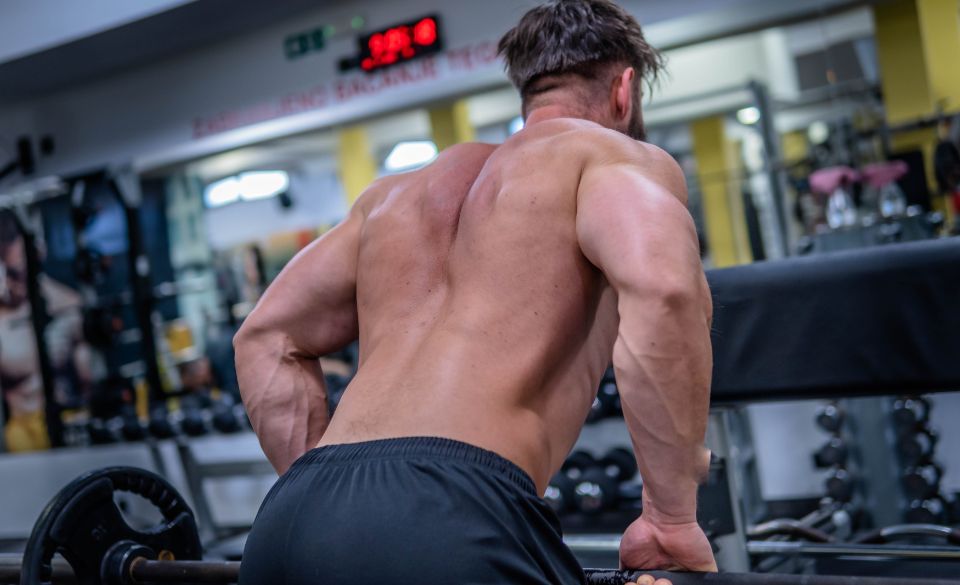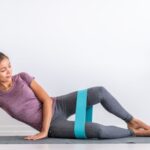
The 10 Best Posterior Deltoid Exercises
Page Contents
When it comes to achieving well-rounded and defined shoulders, many of us focus primarily on the front and middle deltoids. However, neglecting the posterior deltoids can lead to an unbalanced shoulder development and potential injury risks. The posterior deltoids, situated at the back of your shoulders, play a vital role in shoulder stability and overall upper body aesthetics. In this comprehensive guide, we’re diving deep into the top 10 posterior deltoid exercises that will help you achieve those strong, sculpted shoulders you’ve been aiming for.
Why the Posterior Deltoids Matter
The posterior deltoids, often referred to as the “rear delts,” play a critical role in maintaining shoulder health and overall upper body functionality. These muscles are responsible for various important movements, including shoulder extension and external rotation. Neglecting the posterior deltoids can lead to muscle imbalances, rounded shoulders, and even shoulder impingement issues.
Anatomy-wise, the posterior deltoids are often overshadowed by the more prominent anterior and lateral deltoids. However, strengthening the rear delts is essential for creating a well-rounded and aesthetically pleasing shoulder appearance. Moreover, a strong posterior deltoid group helps stabilize the shoulder joint and contributes to proper posture.
The Science Behind Effective Posterior Deltoid Training
Understanding the scientific principles behind effective posterior deltoid training can help you optimize your workout routine and achieve better results. To target the posterior deltoids effectively, you need to focus on exercises that involve horizontal abduction and external rotation of the shoulder joint. These movements stretch and contract the posterior deltoids, leading to muscle growth and strength development.
Research studies, such as those conducted by ACE and other scientific journals, have employed electromyography (EMG) to measure muscle activation during various exercises. EMG readings provide insights into which exercises stimulate the most muscle fibers. Exercises like bent over dumbbell rows, face pulls, and rear delt flyes consistently rank high in terms of posterior deltoid activation.
A Well-Rounded Shoulder Routine
To build strong and sculpted shoulders, it’s crucial to incorporate a balanced mix of exercises that target all three deltoid heads: anterior, lateral, and posterior. Neglecting any of these areas can lead to imbalances that not only affect your aesthetics but also increase the risk of injury. A well-rounded shoulder routine includes compound movements for overall shoulder development and isolation exercises that specifically target the posterior deltoids.
Begin your shoulder workout with compound exercises like overhead presses and lateral raises to work the anterior and lateral deltoids. Then, move on to posterior deltoid isolation exercises to ensure that this muscle group receives adequate attention. Remember that proper form is paramount – using momentum or improper technique can compromise the effectiveness of the exercises and potentially lead to injury.
Progressive Overload and Recovery
As with any muscle group, progressive overload is key to posterior deltoid development. Gradually increasing the weight, resistance, or intensity of your exercises challenges the muscles and encourages growth. However, it’s equally important to allow your posterior deltoids adequate time to recover between workouts. Overtraining can hinder muscle growth and increase the risk of injury, so aim for a well-balanced training schedule.
Incorporate a variety of rep ranges and resistance levels into your routine. This approach ensures that you’re targeting different muscle fibers within the posterior deltoids, contributing to both strength and hypertrophy gains. Furthermore, prioritize proper nutrition and sufficient sleep to support muscle recovery and growth.
10 Posterior Deltoid exercises
1. Bent Over Dumbbell Rows
Bent over dumbbell rows are an excellent compound exercise that not only targets the back muscles but also heavily engages the posterior deltoids. This movement requires you to bend at the hips while holding dumbbells, then pulling them toward your hips in a rowing motion. A study published in the Journal of Strength and Conditioning Research highlighted the significant activation of the posterior deltoids during bent over rows, making it a must-have exercise for a well-rounded shoulder workout.
2. Face Pulls with Rope Attachment
Face pulls with a rope attachment are a staple in any effective shoulder routine, especially for targeting the posterior deltoids. This exercise involves pulling the rope attachment towards your face while keeping your elbows high and wide. A study published in the Journal of Physical Therapy Science emphasized the role of face pulls in enhancing posterior deltoid activation, making it a crucial exercise for balanced shoulder development.
3. Rear Delt Flyes
Rear delt flyes specifically isolate the posterior deltoids, making them an ideal exercise for targeted development. To perform this movement, you’ll need either dumbbells or a machine designed for rear delt flyes. A research study conducted by the American Council on Exercise (ACE) indicated that rear delt flyes effectively activate the posterior deltoids and can be instrumental in addressing muscle imbalances.
4. Seated Cable Rows with Wide Grip
Seated cable rows with a wide grip not only work the muscles of the mid-back but also provide a remarkable stimulus to the posterior deltoids. By pulling the cable attachment toward your torso while maintaining a wide grip, you engage the posterior deltoids to a significant extent. A study published in the European Journal of Applied Physiology demonstrated the substantial muscle activation achieved through wide-grip cable rows.
5. Inverted Rows
Inverted rows, often referred to as bodyweight rows, are a versatile exercise that can be easily performed at home or in the gym. This exercise involves lying underneath a bar or suspension trainer and pulling your body towards it. While it primarily targets the back muscles, the posterior deltoids play a significant role in stabilizing your shoulder blades during the movement.
6. Dumbbell Face Pulls
Dumbbell face pulls offer a slight variation to the rope face pulls and can be equally effective in targeting the posterior deltoids. By using dumbbells instead of a rope attachment, you can focus on the controlled movement of the exercise, ensuring maximum engagement of the target muscles.
7. Prone Rear Delt Raises
Prone rear delt raises are performed by lying face down on an incline bench and raising dumbbells outward while keeping a slight bend in your elbows. This movement provides a unique angle of resistance, effectively engaging the posterior deltoids. A study in the Journal of Human Kinetics highlighted the importance of prone rear delt raises in isolating the rear deltoids.
8. Band Pull-Aparts
Band pull-aparts are a simple yet highly effective exercise for targeting the posterior deltoids. Using a resistance band, hold it with both hands in front of you and pull it apart, focusing on squeezing your shoulder blades together. This exercise not only activates the posterior deltoids but also promotes healthy shoulder movement patterns.
9. Rear Delt Machine
Most gyms have a rear delt machine that allows you to perform rear delt flyes with added resistance. This machine offers a controlled movement pattern, making it an excellent choice for isolating the posterior deltoids and promoting muscle growth.
10. Cable Rear Delt Flyes
Using a cable machine to perform rear delt flyes provides constant tension throughout the movement, leading to effective muscle activation. By keeping your arms slightly bent and focusing on squeezing your shoulder blades together, you can effectively engage the posterior deltoids.
Crafting Your Posterior Deltoid Workout
Now that you’re equipped with knowledge about the importance of posterior deltoid training and the science behind it, let’s put together a sample workout plan that you can tailor to your fitness level and preferences:
Day 1: Posterior Deltoid Emphasis
– Bent Over Dumbbell Rows: 4 sets of 10 reps
– Face Pulls with Rope Attachment: 3 sets of 12 reps
– Rear Delt Flyes: 3 sets of 15 reps
Day 2: Active Recovery or Cardio
– Engage in light cardio, yoga, or mobility work to promote blood flow and recovery.
Day 3: Compound Shoulder Training
– Overhead Shoulder Press: 4 sets of 8 reps
– Lateral Raises: 3 sets of 12 reps
Day 4: Rest and Recovery
– Give your muscles time to rest and repair.
Day 5: Posterior Deltoid Focus
– Seated Cable Rows with Wide Grip: 4 sets of 10 reps
– Dumbbell Face Pulls: 3 sets of 15 reps
– Prone Rear Delt Raises: 3 sets of 12 reps
Day 6: Active Recovery or Cardio
– Engage in light activities to keep your body moving.
Day 7: Complete Rest
– Allow your body to fully recover.
Remember that this is just a sample workout plan, and you can adjust the exercises, sets, and reps to match your fitness level and goals. Consistency is key, so aim to train your posterior deltoids at least twice a week for optimal results.
Final Words – The 10 Best Posterior Deltoid Exercises
Achieving well-developed and balanced shoulders involves paying equal attention to all deltoid heads, including the often overlooked posterior deltoids. Incorporating a variety of posterior deltoid exercises into your routine is crucial for promoting muscle growth, shoulder stability, and overall upper body aesthetics. By understanding the science behind effective training and following a well-structured workout plan, you can sculpt strong and impressive shoulders that not only enhance your physique but also support your overall strength and functionality. So, start incorporating these top 10 posterior deltoid exercises into your training regimen and watch your shoulder game reach new heights!



